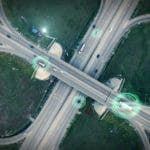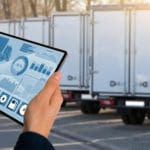How to prepare your heavy fleet for a zero emission transition
Environmental objectives permeate through every industry and logistics is no exception. Currently, macroeconomic factors such as high fuel prices, economic uncertainty and supply chain disruptions are adding to the already complex job of fleet managers. Suppliers of the industry, such as truck manufacturers, are struggling to provide products and services, and the real competition isn’t for the best value for money anymore but who can get you the much-needed product sooner, driving transaction prices up.
Comparatively, customers have increased demand for cheaper, faster and more predictable deliveries to minimise overall costs. These issues are driving internal reviews of operational and financial metrics of fleets as they seek productivity improvements through optimisation.
At the same time there are technological advancements on several fronts in zero-emissions vehicles appropriate for the industry. Lighter, cheaper and more efficient batteries, faster chargers and fuel cell technology are rapidly reaching commercialisation maturity. Major OEMs have announced the launch of 500+ kWh vehicles that could potentially replace 100+ litres of diesel journeys, and wide availability is expected from 2024 onwards.
Hydrogen, deemed by some as the future fuel, will play an essential role in decarbonising many industries, long haul included. R&D for most truck manufacturers is still in early phases, however, and widespread availability isn’t expected until later in the decade, particularly given the challenges with Green Hydrogen production and distribution.
With many pressing short-term challenges, how can heavy fleets prepare for the transition to EVs without consuming scarce bandwidth inside businesses? As the journey to overcome the new-normal challenges and optimise operations, from route planning to asset replacement management, an opportunity presents to baseline and optimise the transition of each asset in your fleet with the following steps:
- Create a fleet transition framework
- Understand the needs of your existing assets as they relate to current alternative fuel technologies. This requires data collection and tracking.
- Understand your depot infrastructure and garaging requirements. This again requires good data.
- Use tools such as BetterFleet to establish a suitable platform for analysis for your whole fleet transition – map how and when assets can be transitioned in your replacement cycles and how to ensure there is the appropriate infrastructure to support them.
- Engage with OEMs
- Do internal stakeholder engagement to create alignment
- Look for grants and subsidies to secure early pilots
Knowing where assets sit in the transition pathway to zero emission transport solutions can set operators up for economically optimal and sustainable transition of each asset group ahead of competitors without compromising financial results and the quality of service provided to customers.
Do you want to know more about the right questions to ask your enterprise in preparation for the common goal of a clean transportation future with net zero emissions? Reach you to our team. At Evenergi, we’ve been helping fleets and governments to collect the right information, interpret data and model economic and leadership transition pathways to a carbon-neutral future of people and goods movements using our advisory services and BetterFleet platform.

 EV Basics – EV Driving Range
EV Basics – EV Driving Range EV Basics – Maximising EV efficiency
EV Basics – Maximising EV efficiency Zero Emission Buses – a framework for a successful transition
Zero Emission Buses – a framework for a successful transition State Government – EV Grants and incentives
State Government – EV Grants and incentives